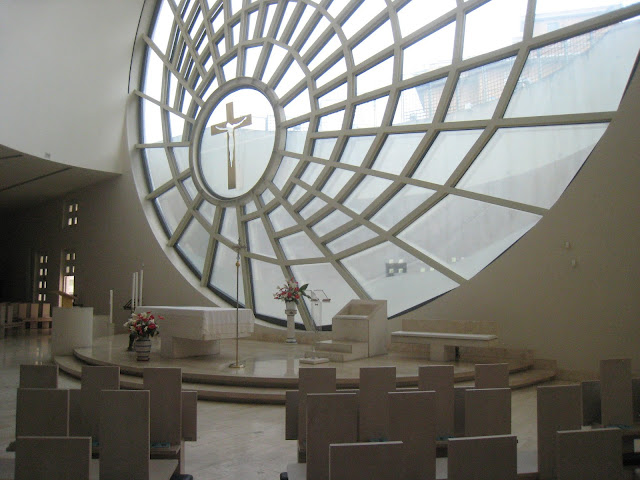 |
| Entrance to bunker today. |
 |
| Villa Savoia, today, in the re-named Villa Ada, one of Rome's largest and 'wildest' parks. The building - Villa Savoia - now houses the Egyptian Embassy. |
 |
| A view of Mussolini's bunker under Villa Torlonia |
Mussolini apparently encouraged the King and Queen to have a bunker. He had one for himself under Villa Torlonia, the site of one of his homes, a bunker we have visited (closed to tours since about October 2016 - not clear why).
There are no bedrooms in the Savoys' bunker. The assumption is that this was an area of temporary - not overnight - reprieve from bombing. There is a 'living room,' complete with tea service, and two bathrooms.
There were various methods to prevent exposure to poison gas - the Italian government feared the Allies would use it, as Italy had in its African colonies. Besides the rubber seals on the doors and other openings, there are existing gas masks and other devices to provide fresh air. If power went out, there was a bicycle to be used to provide man-made power. A servant would peddle to provide energy.
 |
| Gas mask and other accessories from World War II. |
On July 25, 1943, Mussolini was at the Villa, possibly hiding in the bunker, when he was arrested just after meeting with the King. On September 8, 1943, after a truce was signed with the Allies, the King and Queen left the villa for good. On September 9, they left Italy.
| Stai rcase leading to escape hatch in park. The materials used were all first class - like one would use in the royal villa itself. |
| Before the intervention of Roma Sotteranea |
Tours of the bunker generally are scheduled on the weekends and must be reserved well in advance. The cost is 10 Euros. As of now, tours are only in Italian. Information on the bunker is available in English on Roma Sotteranea's web site: http://en.bunkervillaada.it/the-shelter.html
Dianne
 |
| The bunker is circular - schematic below. |
















